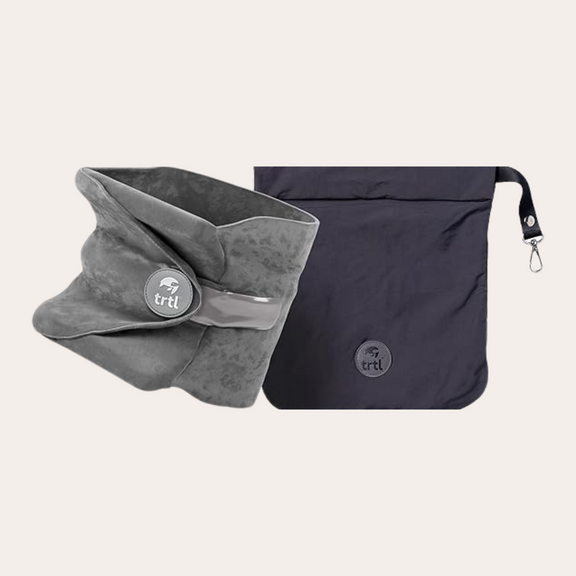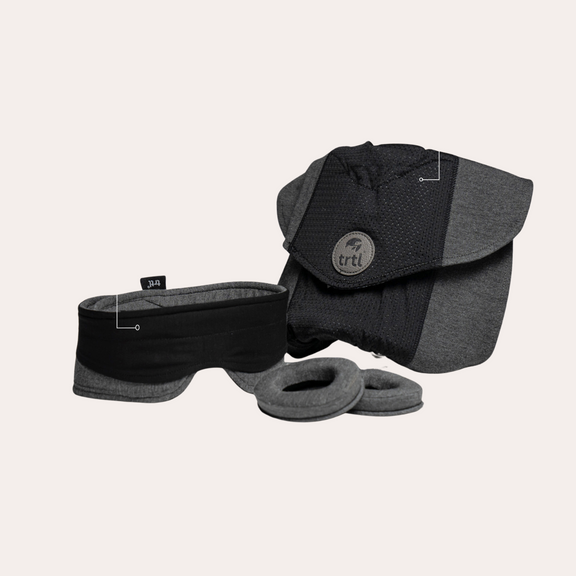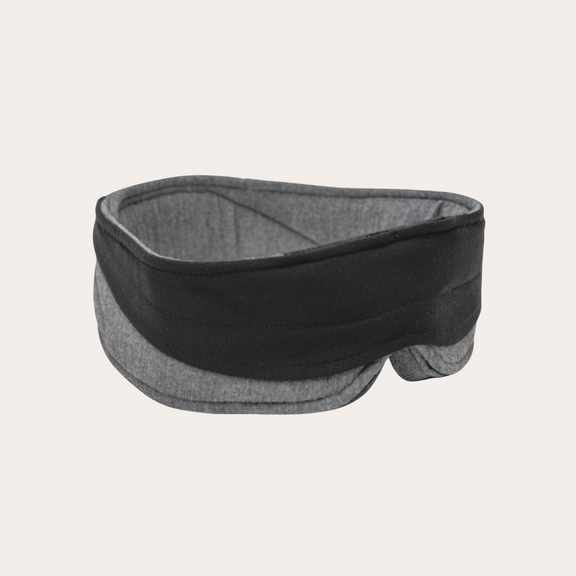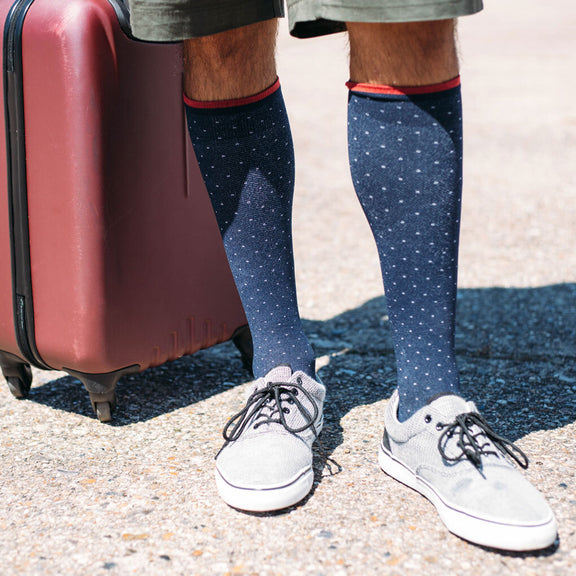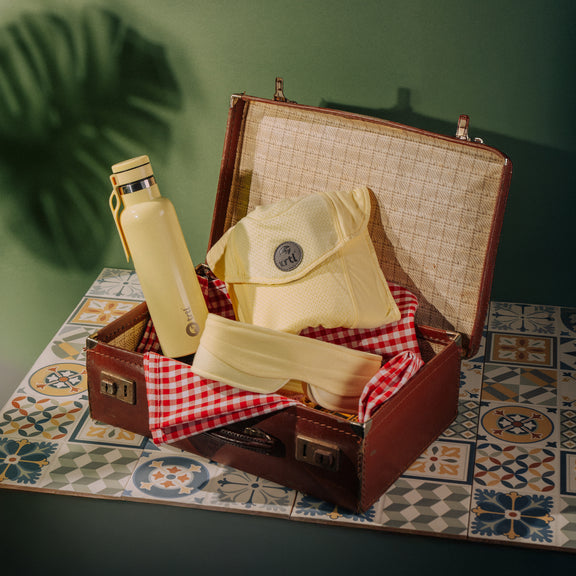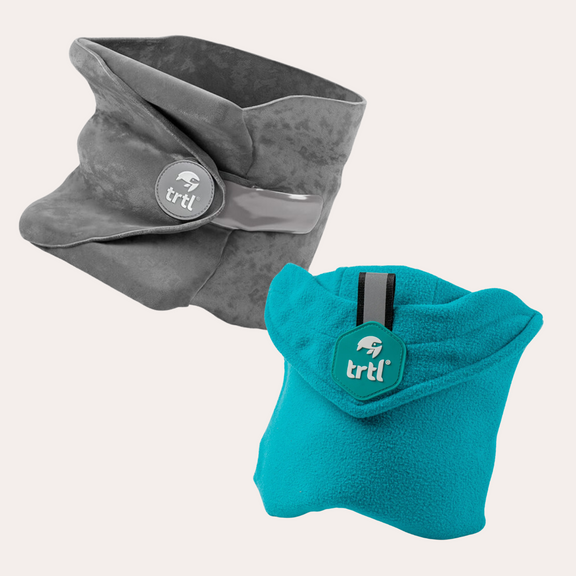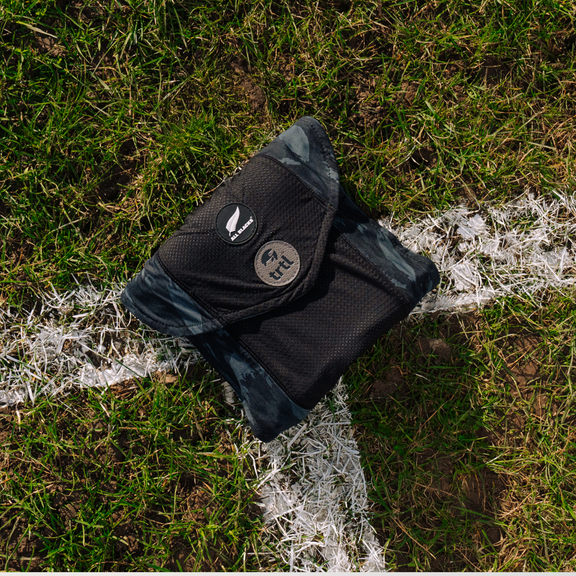Sep 20, 2023
8 Tips to Help Nervous Flyers Overcome Their Fear of Flying
By
Karin Svensson
Flying is a mesmerising experience for many. It's a chance to soar above the clouds, venture to new destinations, and create cherished memories.
But for some, the idea of flying brings anxiety and fear that’s hard to overcome.
With this Trtl Travel guide, we’ll help you understand what a nervous flyer is and how to relieve its symptoms to make your flight as easy as possible.
What does it mean to be a nervous flyer?
Being a nervous flyer means experiencing anxiety or heightened apprehension about flying — it’s not just about a fear of heights. In fact, in the UK, it’s estimated that 168,000-336,000 people experience aerophobia, which is a phobia of flying.
For some, it's the concept of being miles above the ground; for others, it's about the enclosed cabin space, while many people experience an unrooted fear influenced by external factors.
Why do people get nervous about being on a flight?
There are a million different reasons why people don’t feel comfortable flying, from horror stories to a lack of control; here are some of the most common:
1. Past experiences
- Unpleasant memories — If you’ve experienced severe turbulence, unexpected delays, or even had an emergency landing in the past, these memories can create a lasting negative association with flying, even if the situation was managed safely.
- Vicarious trauma — Witnessing another passenger's panic attack or extreme discomfort can inadvertently influence your perceptions about flying.
2. Hearing horror stories
-
Media influence — News about aviation mishaps, although rare, are highly published. This can give a skewed perception of the frequency and risks of these events and heighten the fears of those who are nervous flyers.
- Personal accounts — Hearing about a friend or relative's bad flying experience can inadvertently intensify your own fears, especially if the story is told with emotion or drama.
3. Claustrophobia
- Enclosed spaces — Aeroplane cabins, especially in economy class, offer limited space. If you suffer from a fear of confinement or restricted movement, this can feel overwhelming.
- Perceived lack of exits — The idea that you can’t leave the plane or get fresh air until you’ve landed can amplify feelings of entrapment.
4. Lack of control
- Dependency on people you don’t know — Trusting strangers, like pilots and the cabin crew, with your safety can be a source of anxiety for some people. The idea that you have no personal control over the flight's outcome can often be unsettling.
- Unknown technical aspects — Not understanding the mechanics of how planes work, the sounds they make, or the reasons behind certain procedures can lead to a feeling of unease.
5. Turbulence and flight dynamics
- Physical sensation — The unexpected drops, jolts, or sways during turbulence can be alarming, especially if you don’t understand their commonality and the reasons why they’re happening.
- Height concern — Being thousands of feet above solid ground can be a daunting thought, especially when paired with the visual of looking down from such a height.
What are the symptoms of someone being a nervous flyer?
For some nervous flyers, physical symptoms can arise even before stepping foot onto the plane. Here are some of the tell-tale signs to look out for:
- Elevated heart rate — When boarding an aircraft or during turbulence, nervous flyers often experience a high heart rate. This is the body's natural response to stress or anxiety, commonly known as the "fight or flight" reaction. The heart pumps blood faster to ensure that muscles have the necessary resources to either confront or flee from perceived danger. Even though there's no actual physical threat while in the air, the body can sometimes respond this way due to the mental stress associated with the fear of flying.
- Rapid breathing — Rapid or shallow breathing is another common symptom for those who are apprehensive about flying. The increased breathing rate can stem from the body's attempt to intake more oxygen in preparation for a potential threat. This can sometimes lead to a feeling of being out of breath or an uncomfortable tightness in the chest, further exacerbating feelings of anxiety for the individual.
- Sweating — Breaking into a sweat, especially in the palms or forehead, is a typical response to nervousness. The body sweats more as a way to cool down, given that anxiety can produce extra body heat. For a nervous flyer, the moisture or clamminess can be an unwelcome reminder of their unease, making them even more self-conscious or uneasy during the flight.
- Trembling or shaking — Trembling or shaking is an outward manifestation of the internal turmoil a nervous flyer might be experiencing. This involuntary reaction happens when adrenaline is released into the bloodstream. Adrenaline prepares the muscles for sudden action, and this heightened state of alertness can lead to visible tremors, especially in the hands or legs.
- Nausea or upset stomach — The feeling of unease or dread about flying can often manifest in the stomach. It's not uncommon for nervous flyers to feel nauseous or have an upset stomach, sometimes even leading to vomiting. The gut is closely linked to our emotions, and anxiety can disrupt the balance in the digestive system, leading to these symptoms.
- Dizziness or light-headedness — Dizziness or feeling lightheaded is a symptom that can sometimes catch nervous flyers off guard. When we're anxious, our breathing might become more rapid and shallow, leading to lower carbon dioxide levels in the blood. This can cause a sensation of light-headedness or even a feeling of unreality, further adding to the discomfort of the individual.
What are some tips for nervous flyers?
1. Plan ahead
Being well-prepared is one of the most effective ways to combat flight anxiety. By planning your journey ahead of time – from the moment you leave your home to the point you're settled in your seat – you can reduce the number of unknowns and potential stressors.
This includes checking in online to avoid long queues, keeping all necessary documents easily accessible, and arriving at the airport with plenty of time to spare. By eliminating the rush and chaos that can come with last-minute preparations, you give yourself a calmer start to your journey.
2. Choose a comfortable seat
Seat selection can play a significant role in your flying experience. Opt for a seat you believe will make you feel most at ease.
Some nervous flyers prefer the window seat so they can have a view outside, while others choose the aisle seat for the freedom to get up without disturbing fellow passengers. It's also worth noting that the middle of the plane, over the wings, tends to experience less turbulence!
3. Communicate with the crew
Never underestimate the power of a simple conversation. Airline crews are trained to assist all passengers, including those who are anxious about flying. Informing the crew about your nerves can be incredibly beneficia, and it might be a good idea to speak to them before take off, whilst other passengers are busy putting their bags away. Staff can offer reassurances, update you on flight details, or even just talk to you to help put your mind at ease.
4. Try breathing exercises
Deep, controlled breathing is a powerful tool in managing anxiety. If you start to feel overwhelmed, try taking deep breaths in and out, counting to four for each inhalation and exhalation. This technique can help regulate your heart rate, oxygenate your blood, and act as a grounding method to bring your focus back to the present.
5. Get some distractions
Distraction can be a nervous flyer's best friend. Bring a good book, download your favourite shows, or create a calming music playlist.
Engaging in an activity can help divert your mind from the fact you're flying and make the time pass faster.
6. Avoid caffeine and alcohol
While it might be tempting to have a coffee before your flight or an alcoholic drink to "calm the nerves", both caffeine and alcohol can exacerbate anxiety.
Caffeine can stimulate the nervous system, while alcohol might lower inhibitions, making you more susceptible to emotional extremes. Instead, opt for herbal teas or water to stay hydrated.
7. Focus on positive thoughts
Our minds are powerful, and what we focus on can heavily influence our emotional state. If you catch yourself dwelling on negative scenarios or worrying about the flight, try to redirect your thoughts. Remind yourself of the safety of air travel, and the exciting reason you're travelling, or simply visualise yourself calm and relaxed on the plane.
8. Pack a comfort item
Much like a child has a favourite blanket or toy, adults can also benefit from comfort items. This might be a soft scarf, a photo of loved ones, or even a travel pillow to help relieve stress.
Holding or using an item can provide tactile reassurance and act as a focal point when you feel anxious.
Are there any specific seats that are less anxiety-inducing on the plane?
The seating choice on the plane can significantly impact the comfort level of nervous flyers.
- Seats for a smooth ride — For those anxious about turbulence, sitting over the wings – essentially the plane's centre of gravity – often provides the smoothest experience. This area tends to feel the least amount of motion compared to the front or rear. Think of it like being on a see-saw; the middle point experiences the least movement, while the ends move more dramatically.
- Seats away from engine noise — The roar of the plane's engines can be disconcerting for some flyers. Seats located towards the front of the plane or over the wings tend to be quieter than those near the back, close to the engines. If engine noise is a concern for you, aim to book seats away from the rear.
- Seats for space and an easy exit — Nervous flyers sometimes feel claustrophobic or have a fear of being "trapped." In such cases, an aisle seat can be a good choice. It allows easier access to the toilets and the freedom to stand up and stretch without disturbing fellow passengers. However, those who have a fear of flying might also want to consider booking a seat in the exit rows, provided they meet the safety requirements. Exit-row seats usually offer more legroom, giving a sense of more space.
Get holiday-ready with Trtl Travel
No matter where you’re jetting off to, you want to do it in comfort. At Trtl Travel, our travel pillows will leave you feeling refreshed at your destination, whether it’s a quick trip of a few hours or a long-haul flight.
To find out more helpful tips and tricks for all things flying, check out our blog page.


